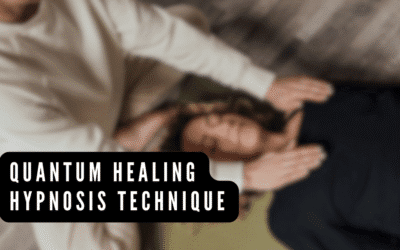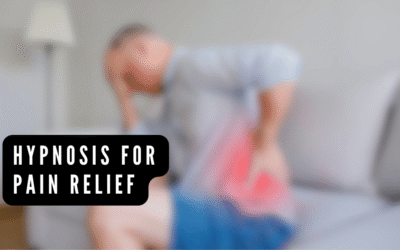Scared of flying?
You’re not alone. Millions of people feel extreme discomfort at the thought of getting on a plane. Unfortunately, this fear can stop you from doing what you love…
- Visiting loved ones
- Taking a dream vacation
- Getting to know new cultures
But here’s some good news: hypnotherapy is a popular and effective way to beat flight anxiety.
(without any side effects or negative experiences.)
In this post, we’ll show you how hypnotherapy helps you transform your fear into confidence and make flying feel as natural as driving your car.
Understanding Fear of Flying
Fear of flying, or aerophobia, affects a lot of people worldwide. Your body reacts to this fear in several ways.
- Your heart might race
- Your palms get sweaty
- You might feel dizzy or nauseous
These physical symptoms often start days before a flight and can become overwhelming as you approach the airport.
Common triggers that might spark your fear include:
- Turbulence and unexpected movements
- Take-off and landing
- Loss of control
- Past negative flying experiences
Your mind plays tricks on you when facing flight anxiety. You might find yourself obsessively checking weather reports or creating worst-case scenarios in your mind
The good news?
Flight anxiety is highly treatable. Hypnosis and coaching can help you manage fears effectively. Many people (some of which we worked with) who once thought they’d never fly again now travel comfortably.
4 Most Effective Treatment Options for Fear of Flying
When it comes to conquering your fear of flying, several treatment options are available. Let’s compare them, so you can choose which one works for you best.
#1: Hypnotherapy for Fear of Flying
Hypnotherapy offers a unique advantage by addressing conscious and subconscious fears at once. During sessions, you’ll learn to replace anxiety-triggering thoughts with calming responses while in a deeply relaxed state.
Benefits of hypnotherapy include:
- Quick results, often seeing improvement in 3-6 sessions
- No medication needed
- Long-lasting effects
- Addresses root causes of fear
- Teaches self-hypnosis techniques for ongoing support
#2: Cognitive-Behavioral Therapy (CBT)
CBT helps you identify and challenge negative thought patterns about flying. You’ll learn to replace catastrophic thinking with more realistic perspectives.
The main aspects of CBT include:
- Weekly sessions with homework assignments
- Practical coping strategies
- Focus on current thought patterns
- May take 8-12 sessions or more
- Evidence-based approach
#3: Medication Options
Anti-anxiety medications can provide temporary relief for flight anxiety. But, they come with some important considerations:
- Quick short-term relief
- Potential side effects
- May cause drowsiness during travel
- Doesn’t address underlying fears
- Can create dependency
#4: Exposure Therapy
This approach exposes you to flying-related situations, starting with simple activities like watching planes and building up to actual flights.
Key points about exposure therapy:
- Takes time and patience
- Can be combined with other methods
- May require multiple sessions
- Sometimes overwhelming
- Usually done with a therapist present
Why Consider Hypnotherapy First?
Hypnosis offers several distinct advantages over other treatments.
It’s gentle yet effective, requires fewer sessions than traditional therapy, and gives you tools you can use anywhere. Plus, it works with your mind’s natural abilities rather than against them.
How Hypnotherapy Works
Hypnotherapy is a powerful tool that helps you overcome your fear of flying by tapping into your subconscious mind.
Think of it as hitting the reset button on your brain’s automatic fear response to flying. During a session, you’ll enter a relaxed state where you’re open to positive suggestions. It’s similar to being completely absorbed in a good movie – you’re aware of everything but feel calm and focused.
Here’s how the process works:
#1: Deep Relaxation
- Your hypnotherapist guides you into a peaceful state
- Your breathing becomes slower and steadier
- Your mind becomes more receptive to change
#2: Accessing the Subconscious
- While relaxed, you can explore the root causes of your flying fears
- Your hypnotherapist helps identify triggering thoughts
- Together, you work on replacing negative associations with positive ones
#3: Reframing Techniques
- Visualization of calm, successful flights
- Creating new, empowering responses to flight-related situations
- Building confidence through mental rehearsal
The beauty of hypnotherapy lies in its ability to help you view flying differently. Instead of seeing it as threatening, you’ll start perceiving it as a safe, normal activity.
Self-Hypnosis Techniques for Flying Anxiety
Learning self-hypnosis can be a great way to manage your fear of flying on the go.
(since you don’t need a therapist and can do it anywhere.)
Here’s how you can use these techniques to feel calmer and more in control during your flights.
Progressive Relaxation is your first step toward self-hypnosis. Start by:
- Finding a quiet, comfortable space
- Taking slow, deep breaths
- Tensing and relaxing each muscle group, from your toes to your head
- Spending 5-10 seconds on each area
The Peaceful Place technique helps create a mental sanctuary you can return to during flights:
- Close your eyes and imagine your most peaceful location
- Notice the sights, sounds, and feelings
- Create a trigger word that instantly brings you back to this place
- Practice accessing this peaceful place daily before your flight
Coping Strategies for Flight Anxiety
While hypnotherapy is a powerful tool, combining it with other coping strategies can create a more effective approach to conquering your fear of flying.
Here are some actionable techniques you can use before and during your flights:
1. Breathing Techniques
- Box Breathing: Inhale for 4 seconds, hold for 4 seconds, exhale for 4 seconds, and hold again for 4 seconds. Repeat several times.
- Psychological Sigh (by Andrew Huberman): Take two quick inhales through the nose, followed by a slow, long exhale through the mouth. This helps calm the nervous system.
2. Distraction Techniques
- Listen to Music or Podcasts: Create a calming playlist or choose engaging podcasts to shift your focus.
- Watch Movies or TV Shows: Download your favorites before the flight.
- Play Games or Puzzles: Mobile games or word puzzles can keep your mind occupied.
3. Mental Grounding Techniques
- 5-4-3-2-1 Technique: Identify 5 things you see, 4 things you can touch, 3 sounds you hear, 2 smells, and 1 taste.
- Mindful Observation: Focus on small details around you—like patterns on the seat fabric or the sounds of the plane.
4. Cognitive Reframing
- Understand Safety: Remind yourself that flying is statistically the safest mode of transport.
- Challenge Irrational Thoughts: Replace thoughts like “What if something goes wrong?” with “Flying is safe, and the crew is highly trained.”
5. Physical Techniques
- Progressive Muscle Relaxation: Tense and release muscle groups from your toes to your head.
- Isometric Exercises: Gently press your hands together or tighten your legs to release tension.
6. Use of Supplements or Medication (If Necessary)
- Natural Options: Magnesium or calming teas (like chamomile or valerian).
- Prescribed Medication: If anxiety is severe, consider consulting a doctor about short-acting anti-anxiety medication.
7. Pre-Flight Preparation
- Arrive Early: Reduces stress related to rushing.
- Comfort Items: Bring a neck pillow, blanket, or something that makes you feel at ease.
- Pre-Flight Routine: Engage in a calming activity before boarding (like light stretching or reading).
8. Support from Others
- Talk to a Friend: Let someone know you’re anxious and stay connected before takeoff.
- Inform the Crew: They’re trained to assist anxious passengers.
9. Practice Exposure
- Visualization: Imagine yourself going through the flight calmly before you actually board.
- Short Flights First: Gradually build confidence with shorter trips before longer ones.
Beat The Fear of Flying with Hypnosis
Hypnotherapy offers a powerful solution for conquering your fear of flying. Through this gentle yet effective approach, you can transform anxious flights into comfortable travel experiences.
Let’s recap what makes hypnotherapy such an effective tool:
- It helps rewire your subconscious mind’s response to flying
- You learn practical relaxation techniques you can use anywhere
- The results are often long-lasting
- It’s a natural, drug-free approach
- Many people see improvements in just a few sessions
The journey to becoming a confident flyer starts with a single step.
At Northern Utah Hypnosis Center, we’ve helped countless people overcome their anxiety and reclaim their freedom. Our proven approach combines traditional hypnotherapy with modern techniques to give you the best results.
Are you ready to beat the fear of flying today?
Book a FREE consultation now and get rid of flying anxiety quickly with a certified hypnotherapist. Don’t let the fear win and stop you from living your life to the fullest.
FAQ
Is self-hypnosis effective for managing fear of flying?
While professional hypnotherapy provides the strongest foundation, self-hypnosis can be a powerful daily tool. Many of our clients successfully use self-hypnosis techniques before and during flights to stay calm and centered.
How can I prepare for my first hypnotherapy session?
To get the most from your session:
- Be ready to make positive changes
- Wear comfortable clothing
- Avoid heavy meals right before
- Come with an open mind
- Write down specific situations that trigger your flight anxiety
Are there any side effects or risks associated with hypnotherapy?
Hypnotherapy is completely safe – you remain aware and in control throughout the session. You can’t get “stuck” in hypnosis, and you won’t do anything against your will. Some people may feel side effects such as being slightly sleepy afterward, similar to waking up from a refreshing nap.
How does hypnotherapy compare to other treatments for flight anxiety?
Unlike medication that just masks symptoms temporarily, hypnosis addresses the root cause of your fear. While traditional therapy can take months or years, hypnotherapy often shows results in just 3-6 sessions.
What is hypnotherapy, and how does it work for fear of flying?
Hypnotherapy is a gentle, relaxing technique that helps you access your subconscious mind to overcome your fear of flying. During a session, you’ll enter a focused state of awareness – similar to being absorbed in a good movie – where you’re more open to positive suggestions.


